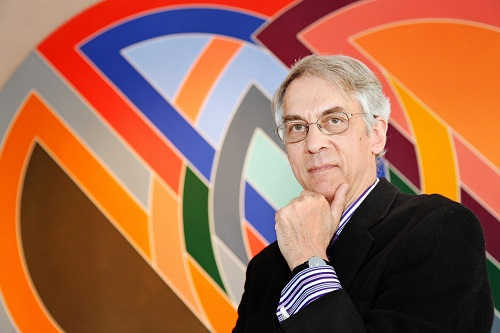Every semester, the Computer Science Department brings faculty, majors, and minors together for an informational event followed by informal discussion over lunch. Speakers may be distinguished experts in an important field, faculty doing cutting-edge research at other institutions of higher learning, or our own majors sharing the benefit of their experiences in summer research or internships with fellow majors.

Recently ACM Distinguished Speaker Dr. David Stork delivered a talk titled, "When Computers Look at Art: Computer Vision, Deep Learning, and Artificial Intelligence in the Study of Fine Art Paintings and Drawings."
Talk abstract: Our cultural heritage of fine art paintings and drawings includes some of the most important images and most valuable objects ever created. Recently, a small but growing group of researchers in computer science are teaming with conservators, art historians, and art critics to apply computer vision and artificial intelligence to previously unsolved problems in the history and interpretation of such art.
Artworks present a wealth of problems rather different from the natural photographs, medical images, remote images, and vehicle guidance images that preoccupy traditional AI research. For example, art images appear in a wealth of visual styles, can depict of non-existent objects (unicorns, halos, etc.), break physical conventions in sizes, perspective, and so forth. Furthermore, much modern art is abstract. Most importantly, many artworks convey messages, stories, or meanings well beyond the power of current semantic image analysis.
Computer methods open new classes of problems, for instance analyzing trends in tens of thousands of artworks over many centuries—trends in the poses of figures, compositional principles in landscapes, color schemes, and so on. Such computer-based connoisseurship, which would take many years of work of a lone unaided art scholar can now be performed extremely rapidly by computer.
This gorgeous talk, profusely illustrated with masterpiece paintings and drawings, illustrates how artificial intelligence is changing how we study, and thus understand our cultural heritage.
BIO
Dr. David G. Stork is a graduate of MIT and the University of Maryland and has held faculty positions in Physics, Mathematics, Electrical Engineering, Computer Science, Statistics, Neuroscience, Psychology, and Art and Art History variously at Wellesley and Swarthmore Colleges, Clark, Boston, and Stanford Universities, and the Technical University of Vienna. He was Chief Scientist of the American arm of the $15B international Ricoh Company and Rambus Fellow at Rambus, Inc. He is currently teaching (part-time) in the departments of Computer Science, Statistics, and Electrical Engineering at Stanford University.
Stork is widely considered a pioneer in the application of rigorous computer vision and artificial intelligence to problems in the history and interpretation of fine art paintings and drawings, having published the first papers that used these techniques to settle debates in art history.